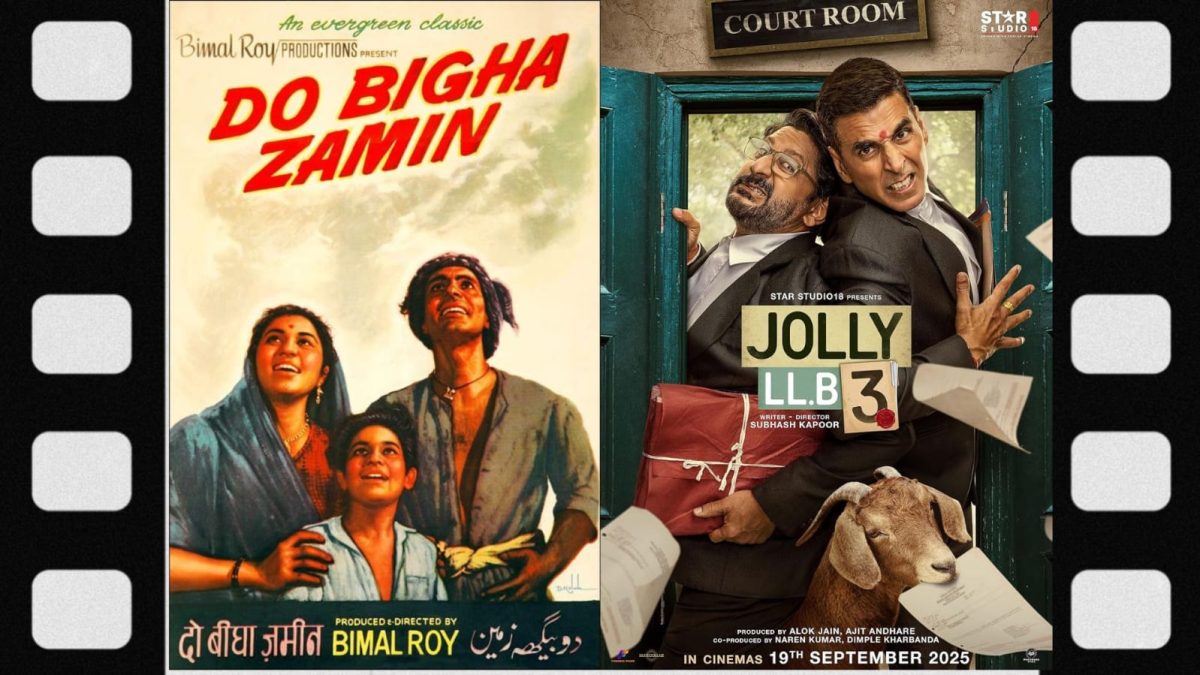From Do Bigha Zameen to Jolly LLB 3: Eight Decades On, the Farmer’s Fight Remains the Same

CPI(ML) Releases Bihar Poll Manifesto, Pledges Land Justice and Farmer Rights
October 27, 2025
Indo–Israel Centre of Excellence for Vegetables Inaugurated in Assam
November 25, 2025Nirmesh Singh | 24 Nov 2025
Small farmers are always at the receiving end. Their suffering has never ended, never paused, never softened. A farmer’s land is easy to take, while the rich never give up theirs. For farmers, each decade arrives with new promises, and each decade ends with their hopes stretched thinner. We have seen them fighting for an appropriate MSP guarantee, struggling to save their land from banks, committing suicide, pleading for justice from revenue officials, and resisting the relentless pressure of real-estate sharks. Being among the most vulnerable groups in the country, everyone seems to stand against them—banks, the revenue machinery, the political class, the industrial lobbies—all ready to squeeze whatever little they have. For generations, these farmers have remained victims of poor economic decisions, flawed agricultural policies, and the cold apathy of governments that remember them only during election seasons.
Yet the question remains: Have things really changed for them in the last eight decades? If one looks deeply, two films—separated by seventy-two years—capture the answer with haunting clarity. One is the timeless classic Do Bigha Zameen (1953), and the other is the recently released Jolly LLB 3 (2025). The years between these films tell a story of how far the farmers’ struggle has come and, tragically, how far it still needs to go.
It took seventy-two years for the farmer’s fight to transform from individual despair to collective resistance. That shift is significant. It shows an awakening, a realization that the forces stacked against them are far too powerful to fight alone. But even today, a crucial segment of society—the urban population—remains largely missing from their movement. This disconnection has allowed the suffering of farmers to continue silently, away from mainstream outrage, away from the solidarity it desperately deserves.
In Do Bigha Zameen, the farmer’s fight is heartbreakingly individual. Shambhu, the protagonist, stands alone against the mighty nexus of the zamindar, the emerging industrialist class, and a government system eager to modernize without considering the human cost. The apathy shown towards him is overwhelming. He is crushed under debt, mocked by authorities, and cornered by those who see land only as a commodity, not as a life-force. When he goes to the city to earn money to repay his debts, he carries hope with him—hope that hard work will save his small patch of land. But the city swallows him whole. His labour means nothing in the unforgiving urban grind. When he finally returns to the village with his family, defeated but still holding onto hope, he finds a factory already standing on his land. The soil he loved has been swallowed by concrete. And when he tries to touch it—just to feel the ground that once sustained his ancestors—he is asked to leave. That moment is not just cinematic tragedy; it is the lived reality of thousands of farmers across the country even today.
Seventy-two years later, Jolly LLB 3 revisits the farmer’s struggle but with a shift. The fight is no longer one farmer against the system—it is farmers together, along with civil society groups and kind-hearted lawyers who are organized, aware, and prepared to challenge the nexus that has only evolved with time. The zamindar might have disappeared from legal records, but he has re-emerged in a new avatar: the land broker, the real-estate developer, the politically connected property dealer. Add to this the local administration, politicians, and mafia networks that have entered the land-grab business, and the nexus becomes even more dangerous, even more well-protected. The industrialists still stand at the end of this chain, benefitting the most while bearing the least accountability.
What has not changed is the cost of resistance. In both films, the farmer pays with what is most precious—family, stability, peace. The sacrifice remains constant. The tears remain the same. The fear of losing everything remains unchanged. The farmer’s world continues to be shaped not by his labour but by the decisions of people who have never stepped into the fields.
Yet, despite this bleak continuity, Jolly LLB 3 hints at a different kind of strength. The collective voice of farmers, their willingness to organize and challenge injustice, shows the evolution of the movement. What once was a lonely battle fought by individuals has now become a shared struggle. It is this shift—from silence to solidarity—that gives a fragment of hope.
Still, one cannot ignore that the fight remains far from equal. The farmer is still pushed into corners where legal battles, bureaucratic traps, and financial burdens suffocate him. The system still treats him as expendable. And the city, with its growing detachment, still refuses to stand with him.
Eighty years have passed, yet the story remains painfully familiar. Do Bigha Zameen portrayed a farmer crushed by a nexus; Jolly LLB 3 shows farmers still fighting the same nexus—only stronger, more modern, and more ruthless now. What has changed is the unity among farmers and the support of civil society groups, but what has not changed is the system that continues to exploit them.
Until the urban population stops seeing farmers as distant figures and begins to recognize them as the backbone of the nation, the suffering will continue. The fight will remain uphill. And films—whether made in 1953 or 2025—will keep reminding us of a truth we have conveniently ignored: the farmer’s struggle is not a story from the past. It is still the story of India today across much of the country.
__________________________________________________________________________________


